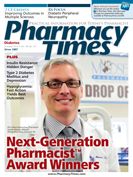Publication
Article
Pharmacy Times
Telemedicine Shows Promise Across Settings
Video conferences could be a viable method to check patients’ medication and encourage better health, according to the results of 2 European studies.
The first study, published in the July 2012 edition of Maturitas, analyzed 68 studies to determine the effect of telemedicine interventions in patients older than 60 years. Included participants lived in their own home, had at least 1 chronic disease, including cardiovascular disease or diabetes, and were able to handle the telemedicine device themselves. Patients with cognitive or visual impairment, communication barriers, or hearing problems were excluded from the study.
In most of the articles, the intervention consisted of vital signs measurements and personal interaction between health care providers and patients. Several studies included only personal interactions, through either a telephone call or video conference (n = 14).
Most of the studies showed positive results, particularly for behavioral factors such as medication or diet adherence. Patients were also more likely to self-manage their disease, the researchers found. Several studies included sophisticated technology set ups that would limit transition to routine care, leading the study authors to recommend additional research on adapting those systems.
The second study, published in the February 2012 edition of the Journal of Telemedicine and Telecare, analyzed the feasibility of checking medications via a video conference. Ten participants checked 30 different medication vials using a desktop PC and webcam. The results were then compared with face-to-vial checks. Information checked included drug name, dosage, and expiration dates, and the medications included ampoules, vials, tablets, and graduations on syringes.
The study authors reported 100% accuracy for drug name, dosage, and graduations on syringes greater than 1 unit; however, expiration dates were difficult to read on the webcam, with an accuracy rate of 63%. The overall accuracy was 91% for all items, with the authors noting that video-based medication checks may be a useful tool for safe use of medications in home care.







